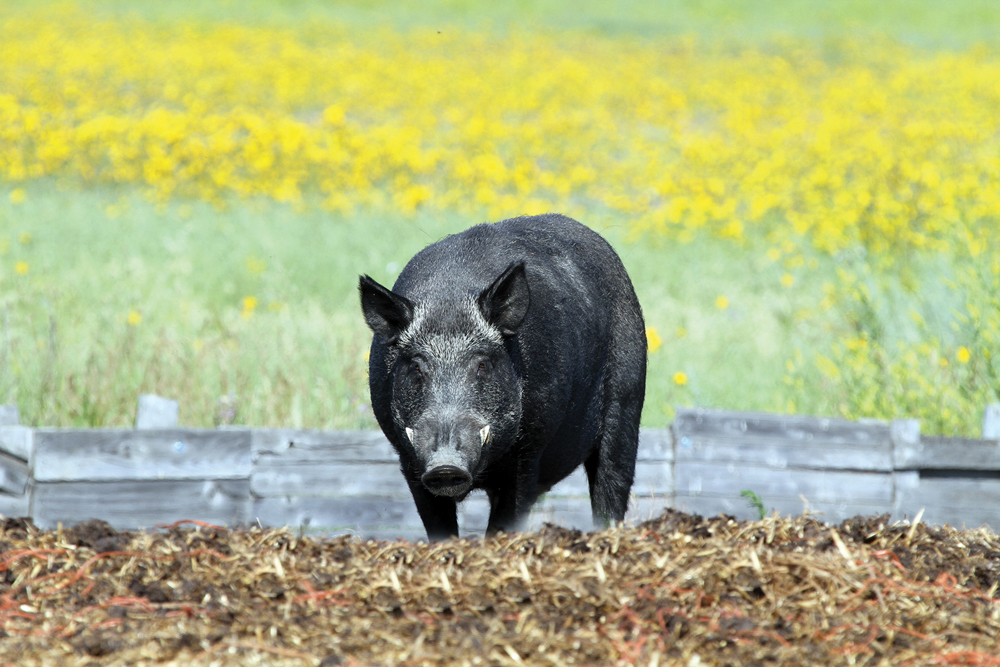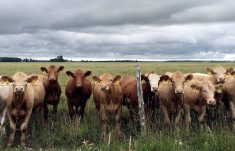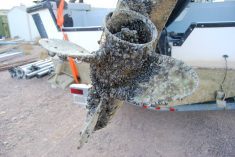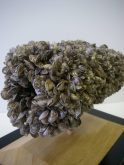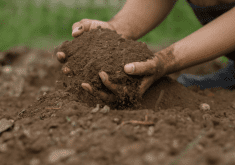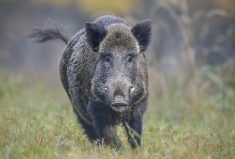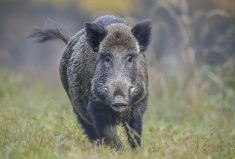Since their numbers are unknown and the wily animals are rarely spotted, it’s been easy to ignore the problem of wild pigs.
But given their potential to spread disease, that’s a mistake, says the country’s leading — and pretty much only — expert on wild boars.
The animals — whose population has mushroomed in the last decade on the Prairies — cause a host of problems. But topping Ryan Brook’s list is their ability to spread diseases: Ones such as porcine epidemic diarrhea and porcine reproductive respiratory syndrome that are already present in Canada as well as ones carried by wild boars in the U.S. such as pseudo-rabies and swine brucellosis. But by far the biggest threat would be if wild pigs here somehow became infected with African swine fever, which has infected wild pig populations in Africa, Asia and parts of Europe, said Brook.
Read Also
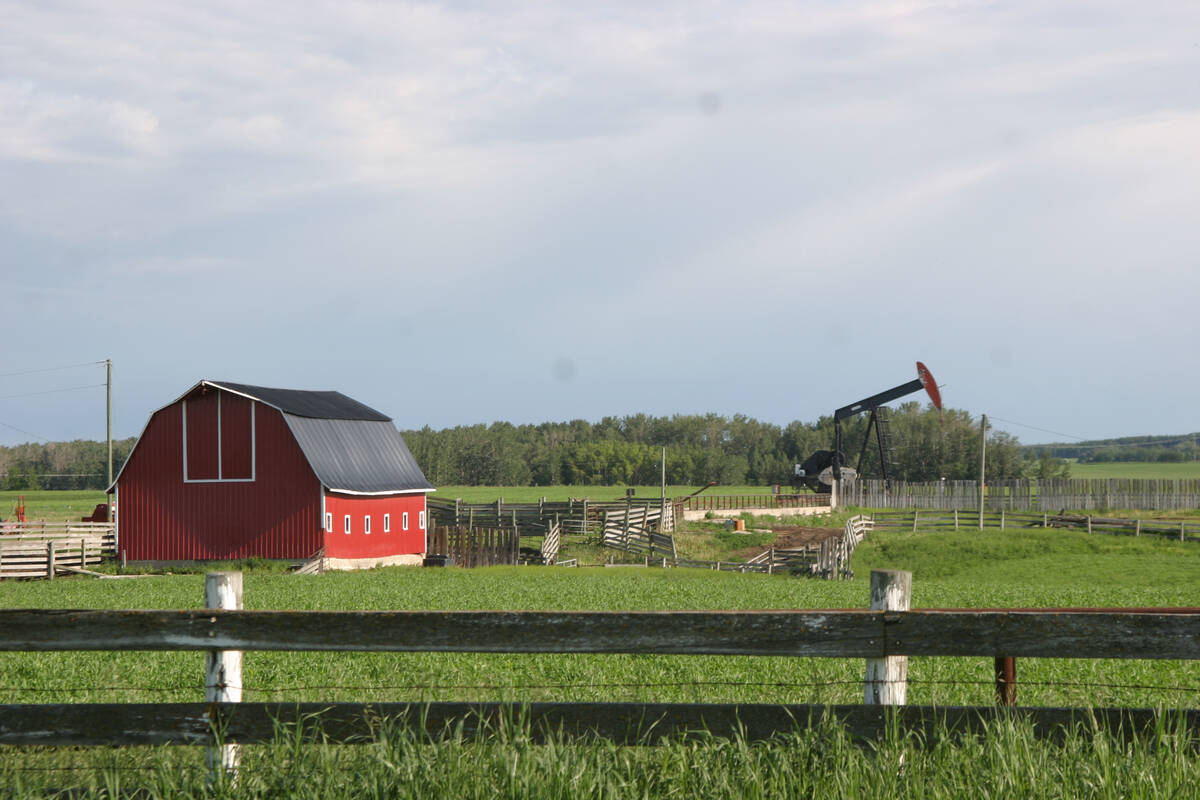
Recommendations in the mature assets strategy could cause potential problems for landholders
The Western Stock Growers’ Association urges producers to pay attention to the potential changes to Alberta’s Mature Assets Strategy.
“We need a national (wild pig) strategy,” said the associate professor of animal sciences at the University of Saskatchewan.
“We need a response plan and we need some broad-scale and intense plans. In the case of a major disease outbreak, what do you do about these wild pigs? They are expanding at an extremely rapid rate.”
But concern about the issue isn’t.
Brook and a PhD student are the only people doing research on wild boars in Canada. Most of their work is funded by the United States Department of Agriculture, since there has been little Canadian interest in studying the problem.
The pigs were originally brought from Europe and Asia in the ’80s, and either raised for meat or for “pen shoot” operations (hunting in fenced compounds). Some escaped while others are believed to have been deliberately released from farms that were not viable.
In the 1990s, small groups were found living on the Prairies. Since the animals have a heavy coat of black fur and originated in Siberia, they can easily survive a Canadian winter.
“They are very well adapted to the cold and they do well in the cold,” said Brook. “You see an overwhelming majority of them in the Prairie provinces, and so far, not on either coast.”
In the first decade of this century, the population expanded exponentially. They are found in huge areas throughout Saskatchewan, north and west of Edmonton, in the Peace Country and along the Alberta/Saskatchewan border.
The situation here
Although precise numbers aren’t known, Brook has been collecting data on pig sightings and reports, and those numbers skyrocketed in the last decade. But while the numbers have increased in Alberta, the problem is much worse in Saskatchewan, according to Brook’s data.
“More than any other province, Alberta has been very proactive,” he said. “Alberta is the only province in Canada that has a strategy in place.”
Phil Abramenko, assistant provincial pest specialist with Alberta Agriculture, began a pilot project to develop a control strategy a few years ago.The counties in the pilot project, Lac Ste. Anne and Woodlands, are where most of the wild pigs have been spotted.
“We are building a database of where wild boar at large are occurring in Alberta, so we can get a handle on the scope of the problem,” said Abramenko.
“What we’re doing is building awareness and education concerning wild boar at large. We’re finding that the average Albertan is not aware that we have an issue with wild boar.”
Despite being nocturnal and very adept at hiding from humans, wild boars are increasingly making their presence known through sheer numbers.
“On average, on the Canadian Prairies, a female wild pig will have six young per litter and will have more than one litter per year,” said Brook.

The biggest wild boar he’s seen was 638 pounds. The animals can do a tremendous amount of crop damage, and will dig up native ecosystems, tearing up wetlands and grasslands. They destroy land by rooting down into soil for grubs, invertebrates and roots.
They need to have some sort of water body or waterway nearby as they have no sweat glands, so they need to wallow in water to stay cool.
“They get into wetlands and they tear it apart and they rip up those roots,” said Brook. “They contaminate it with feces, so it gets contaminated with salmonella and E. coli and that sort of thing. It just has lots and lots of impacts.”
One problem that hasn’t been seen here is African swine fever, which has devastated China’s pig herd, the largest in the world. The deadly porcine disease has never been detected in Canada in either domesticated or wild pigs but if it did, the consequences would be massive.
“The biggest overall concern from my view is disease and the potential for wild pigs to transmit disease,” said Brook.
Eradication the goal
The Alberta pilot project headed by Abramenko will be making recommendations on a permanent control program, with the goal of eradicating wild pigs in the province — although Brook said that will never happen unless Saskatchewan and Manitoba join the effort.
But both men said hunting is not a solution — and in fact makes the situation worse.
A group of wild boars, called a sounder, typically consists of adult sows and two age groups of juveniles born in the past year.
“If you shoot one or two out of a sounder, the rest will disperse and infest new areas,” said Abramenko. “They’ll go totally nocturnal because they’ve been educated, so that makes them harder to track or eradicate. They continue to have one or two litters a year.
“Hunting does nothing for eradication. It makes these animals more wary of humans and harder to trap.”
Even wild boars that haven’t had a confrontation with humans are elusive, generally nesting in thick cover by day and emerging at night to forage. Anyone who sees wild boars, hits one with a vehicle or suspects they’ve damaged crops should call 310-FARM or their county’s ag fieldman. The animals may also leave other signs — tuffs of hair on barbed wire or hoofprints in snow (which are similar to deer tracks but dewclaws will be evident).
“Our purpose is to eradicate them because of the problems they bring about to agriculture and the environment,” said Abramenko.
It’s well worth the effort and cost, said Brook.
“In the U.S., wild pigs are a $1.2-billion problem each year,” he said. “That’s the long-term future for Alberta if we can’t get this under control.
“If this isn’t under control, this will cost Alberta tens of millions of dollars each year.”


